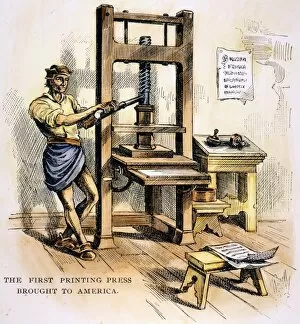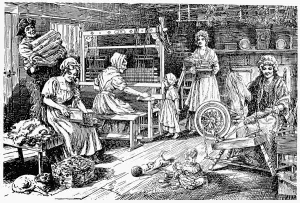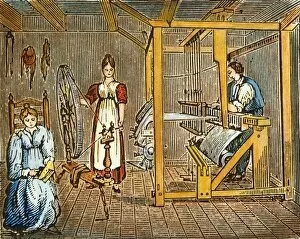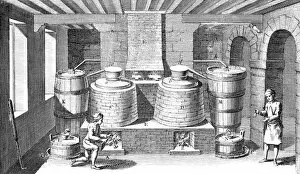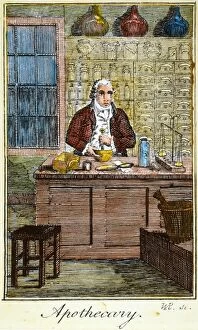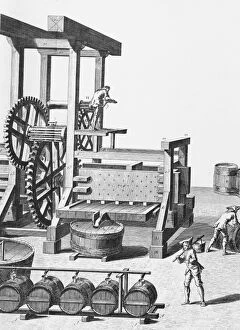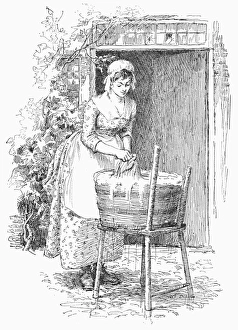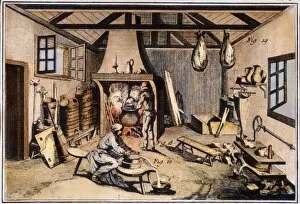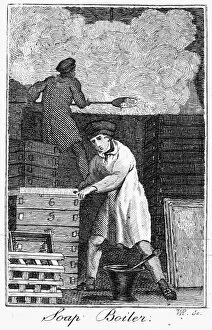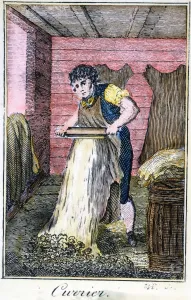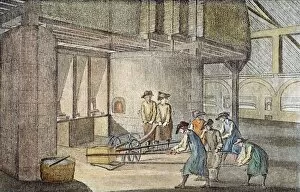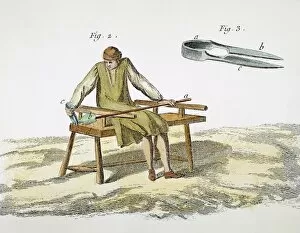Colonial Industry Collection
Colonial Industry: A Glimpse into the Thriving Craftsmanship of Early America In the 18th century
All Professionally Made to Order for Quick Shipping
Colonial Industry: A Glimpse into the Thriving Craftsmanship of Early America In the 18th century, glassblowing was an intricate art form that captivated both artisans and onlookers alike. This copper engraving from France showcases a skilled glassmaker in action, as he carefully blows the molten glass after subjecting it to intense heat for the second time. The delicacy and precision required for this craft highlight the mastery of colonial glassmakers. As tensions escalated during the outbreak of the Revolutionary War, colonial American blacksmiths played a crucial role in forging weapons for their compatriots. This wood engraving depicts a dedicated blacksmith hard at work, shaping metal with his hammer amidst sparks flying through the air. Their craftsmanship not only armed soldiers but also symbolized their commitment to freedom. The advent of printing press technology revolutionized communication in colonial America. In 1639, English printer Stephen Daye brought over the first printing press to Cambridge, Massachusetts. This wood engraving captures this historic moment when words began flowing onto paper with ease and speed. The printing press became instrumental in disseminating ideas and fostering intellectual growth throughout early America. Textile production formed another vital aspect as carding, spinning, and weaving woolen cloth were essential skills passed down through generations. An illustration from an 18th-century source portrays these labor-intensive processes that took place within homes or small workshops across colonies like New England. These dedicated cloth makers ensured that colonists had access to warm garments made from locally sourced materials. Hand-presses were indispensable tools used by printers during colonial times; they allowed for mass production of newspapers, pamphlets, and books which fueled intellectual discourse among Americans striving for independence from British rule. The image shows one such hand-press commonly employed throughout 18th-century Colonial America - a testament to its enduring significance.


